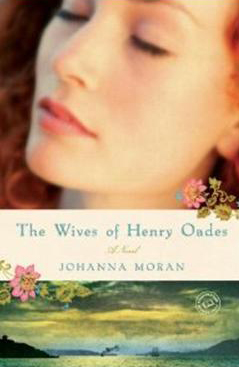
Johanna Moran's fictional "The Wives of Henry Oades" is based on a 19th-century newspaper account that turns out to be, in all likelihood, a hoax. (Credit: Amazon.com)
A New Zealand journalist Matt Nippert researched a book based on a true story this spring and discovered that the “true story” was in all likelihood, a hoax.
On April 18, Matt Nippert offered an analysis in the New Zealand Herald of the novel “The Wives of Henry Oades,” which tells the story of a man named Henry Oades who believes his wife and children have been killed by a Maori raid. (The Maori are native people of New Zealand.) Oades leaves New Zealand, moves to California, and remarries. But then, his first family turns up alive and Oades is put on trial for bigamy. He is acquitted because he truly believed his first wife was dead.
The book, by Johanna Moran, does identify itself as fiction, which Nippert wrote makes the book exempt from criticism of books wrongly presented as historical or factual accounts, like James Frey’s “Million Little Pieces.” Some of the changes Moran made to the historical account included the time and setting of the story, Nippert noted.
However, Nippert wrote that Moran spent nine years on the book “and the revelation her inspiration was an elaborate hoax makes her question the near-decade she spent writing.”
Nippert reported that Peter Attwell, a research librarian at the national library of New Zealand’s Alexander Turnbull Library, said that the story should have been covered by New Zealand newspapers if it really happened, but there aren’t any records of it.
Oades’ story was sourced to a Dec. 16, 1873 article in the Los Angeles Evening Express. The story is also in the textbook “Readings in American History.”
But, Nippert wrote “the only mention of Oades” found in New Zealand’s Wellington’s National Archives is from mid-1874 articles “sourced from the trial reports in newspapers in New York and London.” Some U.S. media, including The New York Times on Jan. 25, 1874, reported the story.
Nippert reported that Stuart Walzer, a California family law attorney also investigated the story after hearing about it at Harvard University. Walzer found the original article in the Los Angeles Evening Express, but he also found a follow-up story in the newspaper, which said that the original story was “an imaginary case of bigamy” and therefore not real.
Nippert reported that U.S.-based literary critic Jolisa Gracewood said, “It doesn’t really matter whether the inspiration comes from real life or from an urban legend … What matters is that the author transforms it into an original, persuasive and affecting work of fiction…If it’s being promoted as ‘based on a true story’, the publishers might want to rethink that strategy.”
Nippert noted that the back cover of the book’s New Zealand edition says it is “based on a widely-publicised and controversial newspaper account of the 1800s” but that the uncorrected review copy of the book had identified the story as “based on details of a bigamy case found by the author’s father in San Francisco court records.”
The book’s synopsis on Moran’s website describes it as being “inspired by a widely distributed newspaper article.”
On her website, Moran tells about the possibility the story had been a hoax.
The St. Petersburg Times’ review, published Feb 28, wrote that the Oades story Moran wrote about was found by her father. But, St. Petersburg Times didn’t question if the story was legitimate.
A Feb. 14 review on Boston.com correctly calls it a novel “based on a story that may or may not be true, but was widely circulated in its day.”





